CUBISM (1907 – 1915)
A primary influence that led to Cubism was the representation of three-dimensional
form in the late works of Paul
Cezanne. The two primary Cubists artists were Pablo
Picasso and Georges Braque. Picasso made his first cubist paintings based on Cézanne's idea that all
depiction of nature can be reduced to three solids: cube, sphere and cone.
Cubism had two distinct phases. The early phase, which lasted until about 1912,
was called 'Analytical Cubism', a style where objects are analyzed, broken up and reassembled in an abstracted
form. Instead of depicting objects from one viewpoint (Renaissance perspective), the artist
depicts the subject from a multitude of viewpoints to represent the subject in a greater context. Similar
to the reaction of Manet's "Le Dejeuner Sur
L'herbe" the rejection of traditional perspective shocked
the sensibilities and tastes of the ‘conservative’ Salon judges.
Around 1912, the styles of Picasso and Braque became predictable. Their works had
grown so similar that viewers could not tell them apart. The next stage became 'Synthetic Cubism' — a more direct,
colorful and decorative style.
After World War I artists continued to carry the Cubist movement forward until the
mid-1920s when its avant-garde status was rendered questionable by the emergence of geometric abstraction
and Surrealism in Paris.
PABLO PICASSO (1881-1973)
“Les Demoiselles
d'Avignon” (The Young Ladies of Avignon,
1907)
Oil on Canvas (Museum of Modern Art, New York City)
Picasso’s Les Demoiselles
d'Avignon effectively begins the Cubist movement. His dramatic
scene of raw and primitive looking prostitutes, some painted violently (probably influenced by Easter Island Moai
statues and African masks), was a radical departure from the Fauvist style.
Andre Derain warned
Picasso, "One day we'll find you hanging behind this huge painting. It's such a cursed
enterprise". Picasso called it his first exorcism painting – hoping it would protect him against evil
female spirits (Picasso was suffering of venereal disease at the time).
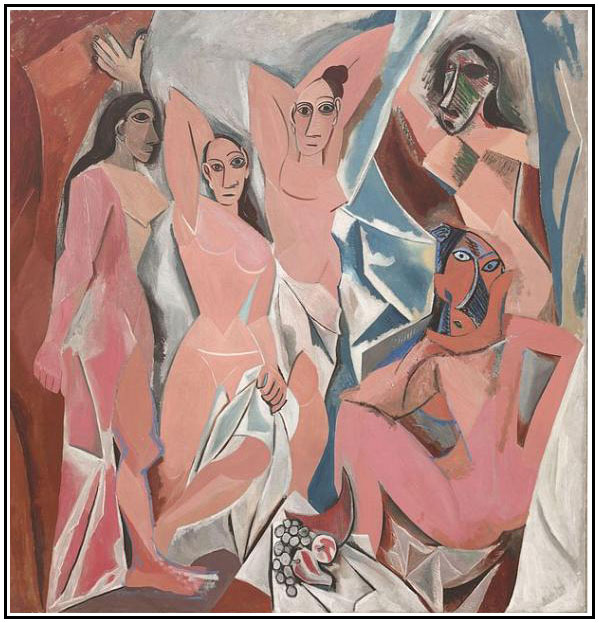
"Brick Factory at
Tortosa" (1909)
Oil on Canvas (New State Museum of Western Art, Moscow)
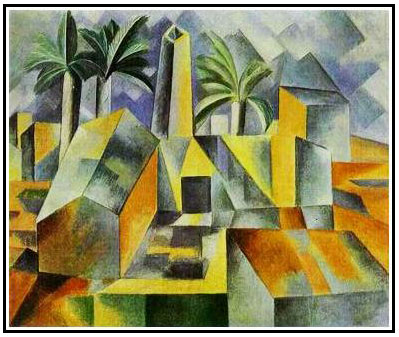
"Ambroise
Vollard" (1915)
Oil on Canvas (Pushkin Museum of Fine Art, Moscow)
Synthetic style.
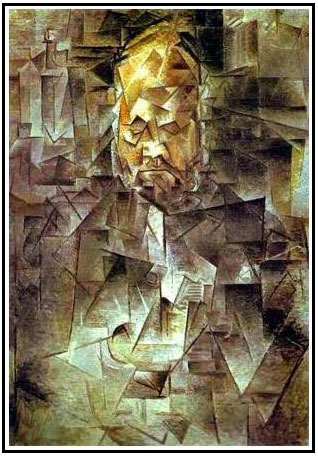
"Still Life with Mandolin and
Guitar" (1924)
Oil on Canvas (Guggenheim Museum, New York City)
Synthetic style.
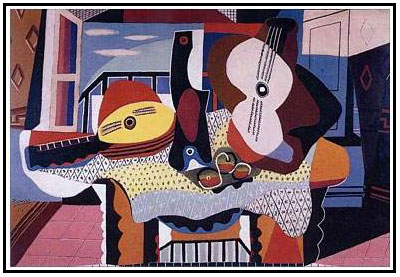
GEORGES BRAQUE (1882-1963)
"Viaduct at
L'Estaque" (1908)
Oil on Canvas (Museum Pompidou, Paris)
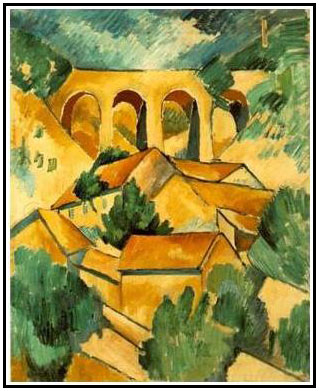
“Violin and
Candlestick” (1910)
Oil on Canvas (San Francisco Museum of Modern Art)
Synthetic style.
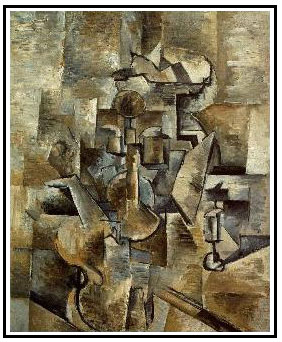
MARC
CHAGAL (1887-1985)
“I and the
Village” (1911)
Oil on Canvas (Museum of Modern Art, New York City)
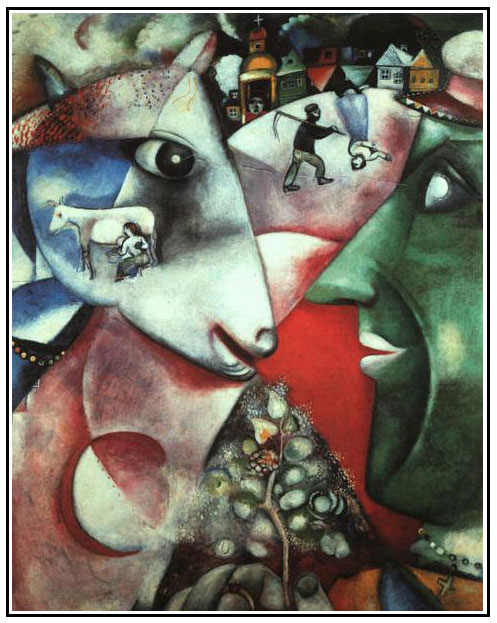
MARCEL DUCHAMP (1887-1968)
“Nude Descending a
Staircase” (1912)
Oil on Canvas (Philadelphia Museum of Art)
Before its first presentation at the Parisian 1912 Salon des Independants,
Nude Descending a Staircase was
rejected by the Cubists for being too futurist.
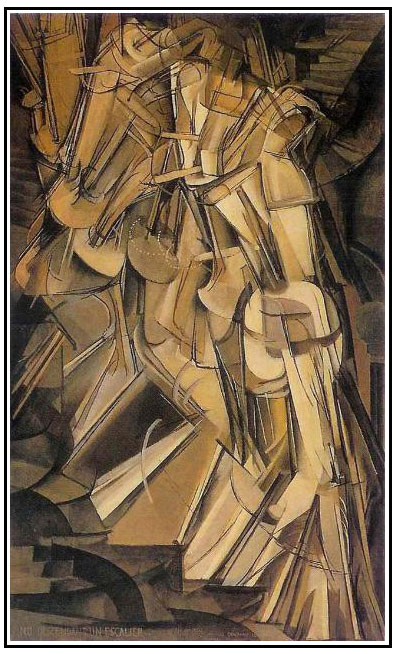
JEAN
METZINGER (1883-1956)
“La Femme au
Cheval” (Woman with a Horse, 1912)
Oil on Canvas (Statens Museum for Kunst, Copenhagen)
Jean Metzinger and Albert Gleizes authored the Cubist manifesto, "Du Cubisme",
published in time for the 1912 Salon de la Section d'Or, the largest Cubist exhibition of its
time.

JUAN GRIS (1887-1927)
"Violin and
Glass" (1915)
Oil on Canvas (Fogg Art Museum Cambridge, MA)
Juan Gris is often referred to as the 'Third Musketeer of Cubism'. "Violin and
Glass" is in the ‘Synthetic’ later style.
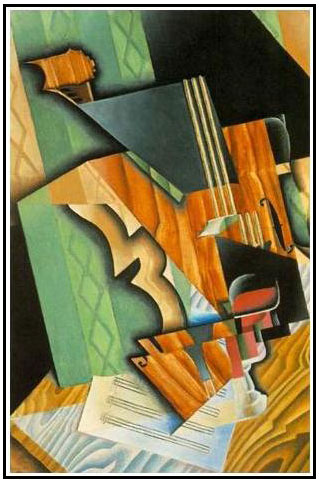
PAUL
KLEE (1879-1940)
"Senecio" (1922)
Oil on Canvas (Kunstmuseum, Basel, Switzerland)
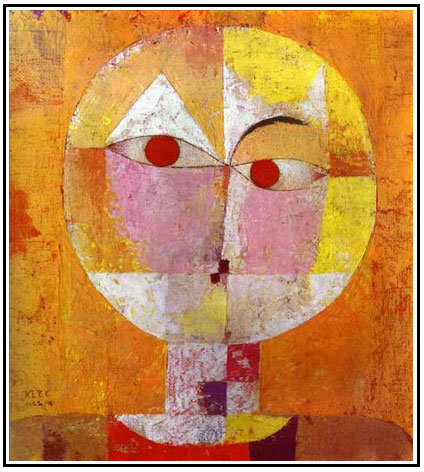
z
| 









